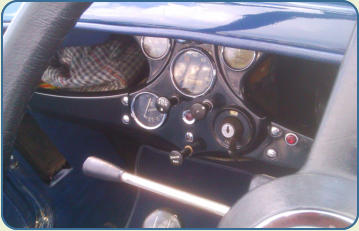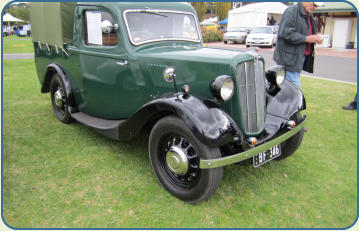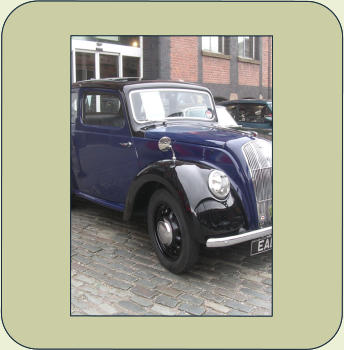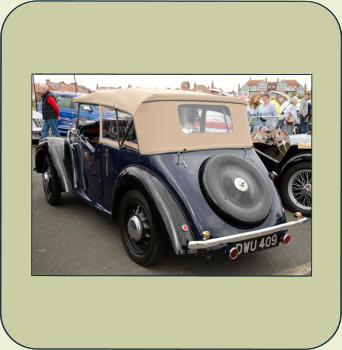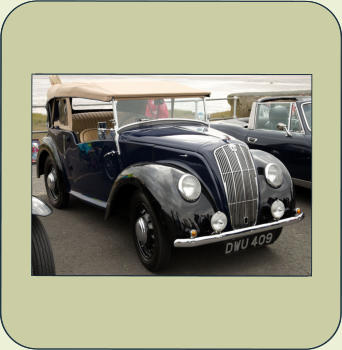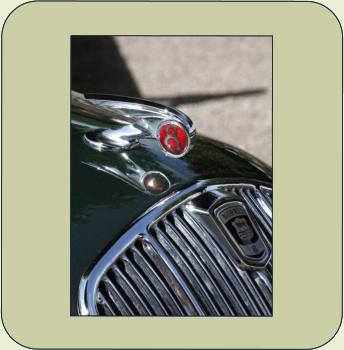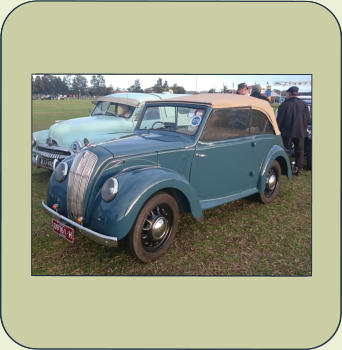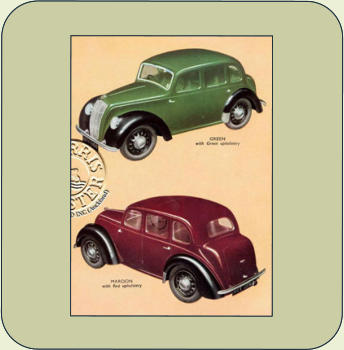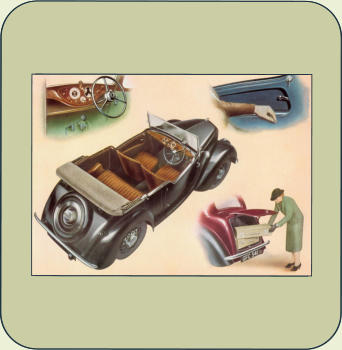

© Copyright Morris Register of New Zealand Inc (Auckland)
Morris 8 1935-1938










The Morris Eight was a small car inspired by the sales popularity of the similarly shaped Ford Model Y. The success of the car enabled Morris to regain its position as Britain's largest motor
Model Y. The success of the car enabled Morris to regain its position as Britain's largest motor manufacturer.
The car was powered by a Morris UB series 918 cc four-cylinder side-valve engine with three
manufacturer.
The car was powered by a Morris UB series 918 cc four-cylinder side-valve engine with three bearing crankshaft and single SU carburettor with maximum power of 23.5 bhp (17.5 kW). The
bearing crankshaft and single SU carburettor with maximum power of 23.5 bhp (17.5 kW). The gearbox was a three-speed unit with synchromesh on the top two speeds and Lockheed
gearbox was a three-speed unit with synchromesh on the top two speeds and Lockheed hydraulic brakes were fitted. Coil ignition was used in a Lucas electrical system powered by a 6
hydraulic brakes were fitted. Coil ignition was used in a Lucas electrical system powered by a 6 volt battery and third brush dynamo.
The body which was either a saloon or open tourer was mounted on a separate channel
volt battery and third brush dynamo.
The body which was either a saloon or open tourer was mounted on a separate channel section chassis with a 7 feet 6 inches (2.29 m) wheelbase. The tourer could reach 58 mph (93
section chassis with a 7 feet 6 inches (2.29 m) wheelbase. The tourer could reach 58 mph (93 km/h) and return 45 miles per imperial gallon (6.3 L/100 km; 37 mpg-US); the saloons were a
km/h) and return 45 miles per imperial gallon (6.3 L/100 km; 37 mpg-US); the saloons were a little slower. The chrome-plated radiator shell and honeycomb grille were dummies disguising
little slower. The chrome-plated radiator shell and honeycomb grille were dummies disguising the real one hidden behind. In September 1934 the bare chassis was offered for £95. For
the real one hidden behind. In September 1934 the bare chassis was offered for £95. For buyers of complete cars prices ranged from £118 for the basic two-seat tourer to £142 for the
buyers of complete cars prices ranged from £118 for the basic two-seat tourer to £142 for the four door saloon with "sunshine" roof and leather seats. Bumpers and indicators were £2 10
four door saloon with "sunshine" roof and leather seats. Bumpers and indicators were £2 10 shillings (£2.50) extra.
Compared with the similarly priced, but much lighter and longer established Austin 7, the
shillings (£2.50) extra.
Compared with the similarly priced, but much lighter and longer established Austin 7, the 1934/35 Morris Eight was well equipped. The driver was provided with a full set of instruments
1934/35 Morris Eight was well equipped. The driver was provided with a full set of instruments including a speedometer with a built in odometer, oil pressure and fuel level gauges and an
including a speedometer with a built in odometer, oil pressure and fuel level gauges and an ammeter. The more modern design of the Morris was reflected in the superior performance of
ammeter. The more modern design of the Morris was reflected in the superior performance of its hydraulically operated 8 inch drum brakes. The Morris also scored over its Ford rival by
its hydraulically operated 8 inch drum brakes. The Morris also scored over its Ford rival by incorporating an electric windscreen wiper rather than the more old-fashioned vacuum
incorporating an electric windscreen wiper rather than the more old-fashioned vacuum powered equivalent, while its relatively wide 45 inch track aided directional stability on corners.
The Series I designation was used from June 1935 in line with other Morris models, cars made
powered equivalent, while its relatively wide 45 inch track aided directional stability on corners.
The Series I designation was used from June 1935 in line with other Morris models, cars made before this are known as pre-Series although the official Morris Motors designation was by the
before this are known as pre-Series although the official Morris Motors designation was by the model year (35) even though they were introduced in October 1934. Of the 164,102 cars
model year (35) even though they were introduced in October 1934. Of the 164,102 cars produced approximately 24,000 were tourers.
produced approximately 24,000 were tourers.
 Model Y. The success of the car enabled Morris to regain its position as Britain's largest motor
Model Y. The success of the car enabled Morris to regain its position as Britain's largest motor manufacturer.
The car was powered by a Morris UB series 918 cc four-cylinder side-valve engine with three
manufacturer.
The car was powered by a Morris UB series 918 cc four-cylinder side-valve engine with three bearing crankshaft and single SU carburettor with maximum power of 23.5 bhp (17.5 kW). The
bearing crankshaft and single SU carburettor with maximum power of 23.5 bhp (17.5 kW). The gearbox was a three-speed unit with synchromesh on the top two speeds and Lockheed
gearbox was a three-speed unit with synchromesh on the top two speeds and Lockheed hydraulic brakes were fitted. Coil ignition was used in a Lucas electrical system powered by a 6
hydraulic brakes were fitted. Coil ignition was used in a Lucas electrical system powered by a 6 volt battery and third brush dynamo.
The body which was either a saloon or open tourer was mounted on a separate channel
volt battery and third brush dynamo.
The body which was either a saloon or open tourer was mounted on a separate channel section chassis with a 7 feet 6 inches (2.29 m) wheelbase. The tourer could reach 58 mph (93
section chassis with a 7 feet 6 inches (2.29 m) wheelbase. The tourer could reach 58 mph (93 km/h) and return 45 miles per imperial gallon (6.3 L/100 km; 37 mpg-US); the saloons were a
km/h) and return 45 miles per imperial gallon (6.3 L/100 km; 37 mpg-US); the saloons were a little slower. The chrome-plated radiator shell and honeycomb grille were dummies disguising
little slower. The chrome-plated radiator shell and honeycomb grille were dummies disguising the real one hidden behind. In September 1934 the bare chassis was offered for £95. For
the real one hidden behind. In September 1934 the bare chassis was offered for £95. For buyers of complete cars prices ranged from £118 for the basic two-seat tourer to £142 for the
buyers of complete cars prices ranged from £118 for the basic two-seat tourer to £142 for the four door saloon with "sunshine" roof and leather seats. Bumpers and indicators were £2 10
four door saloon with "sunshine" roof and leather seats. Bumpers and indicators were £2 10 shillings (£2.50) extra.
Compared with the similarly priced, but much lighter and longer established Austin 7, the
shillings (£2.50) extra.
Compared with the similarly priced, but much lighter and longer established Austin 7, the 1934/35 Morris Eight was well equipped. The driver was provided with a full set of instruments
1934/35 Morris Eight was well equipped. The driver was provided with a full set of instruments including a speedometer with a built in odometer, oil pressure and fuel level gauges and an
including a speedometer with a built in odometer, oil pressure and fuel level gauges and an ammeter. The more modern design of the Morris was reflected in the superior performance of
ammeter. The more modern design of the Morris was reflected in the superior performance of its hydraulically operated 8 inch drum brakes. The Morris also scored over its Ford rival by
its hydraulically operated 8 inch drum brakes. The Morris also scored over its Ford rival by incorporating an electric windscreen wiper rather than the more old-fashioned vacuum
incorporating an electric windscreen wiper rather than the more old-fashioned vacuum powered equivalent, while its relatively wide 45 inch track aided directional stability on corners.
The Series I designation was used from June 1935 in line with other Morris models, cars made
powered equivalent, while its relatively wide 45 inch track aided directional stability on corners.
The Series I designation was used from June 1935 in line with other Morris models, cars made before this are known as pre-Series although the official Morris Motors designation was by the
before this are known as pre-Series although the official Morris Motors designation was by the model year (35) even though they were introduced in October 1934. Of the 164,102 cars
model year (35) even though they were introduced in October 1934. Of the 164,102 cars produced approximately 24,000 were tourers.
produced approximately 24,000 were tourers.
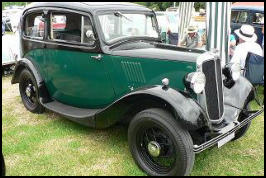
Morris Eight Series 1
Morris Eight
Overview
Manufacturer
Morris Motors Limited
Production 1935-1938, 164,102 Produced
Body & Chassis
Body style
•
2-door saloon
•
4-door saloon
•
2-seat tourer (convertible)
•
4-seat tourer (convertible)
•
5 cwt van
Layout
Font engine rear wheel drive
Platform
Separate chassis frame with X
stiffening members
Powertrain
Engine
918 cc Morris Type UB Sidevalve
Straight-4
Transmission 3 Speed Manual
Dimensions
Wheelbase
90 in (2286 mm)
81 in (2057 mm) (swb tourer)
Width
54.5 in (1384 mm)
Height
60 in (1524 mm)
Chronology
Predecessor
Morris Minor (1928)
Successor
Morris Minor MM
In 1938 the car was updated with a slight restyle to match the other cars in the Morris range. Changes included painted rather than plated radiator surrounds and disc (Easiclean) wheels
Changes included painted rather than plated radiator surrounds and disc (Easiclean) wheels replaced the previous "Magna" wire spoked ones. The engine and running gear were
replaced the previous "Magna" wire spoked ones. The engine and running gear were unchanged.
unchanged.
 Changes included painted rather than plated radiator surrounds and disc (Easiclean) wheels
Changes included painted rather than plated radiator surrounds and disc (Easiclean) wheels replaced the previous "Magna" wire spoked ones. The engine and running gear were
replaced the previous "Magna" wire spoked ones. The engine and running gear were unchanged.
unchanged.
Morris Eight Series II
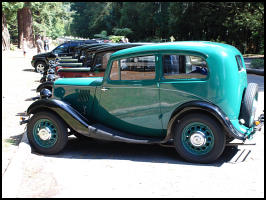
Series II with easy-clean wheels
Overview
Manufacturer
Morris Motors Limited Production 1938 54,000 Produced
Production 1938 54,000 Produced Body
•
2 door saloon
Body
•
2 door saloon •
4 door saloon
•
4 door saloon •
2 seat convertible
•
2 seat convertible •
4 seat convertible
•
4 seat convertible Powertrain
Engine 918 cc Morris Type UB Side-valve
Powertrain
Engine 918 cc Morris Type UB Side-valve Straight 4
Straight 4 Dimensions
Wheelbase
290 in (2286 mm)
Dimensions
Wheelbase
290 in (2286 mm) Chronology
Successor
Series E
Chronology
Successor
Series E
 Production 1938 54,000 Produced
Production 1938 54,000 Produced Body
•
2 door saloon
Body
•
2 door saloon •
4 door saloon
•
4 door saloon •
2 seat convertible
•
2 seat convertible •
4 seat convertible
•
4 seat convertible Powertrain
Engine 918 cc Morris Type UB Side-valve
Powertrain
Engine 918 cc Morris Type UB Side-valve Straight 4
Straight 4 Dimensions
Wheelbase
290 in (2286 mm)
Dimensions
Wheelbase
290 in (2286 mm) Chronology
Successor
Series E
Chronology
Successor
Series E
Series 2
Series 1




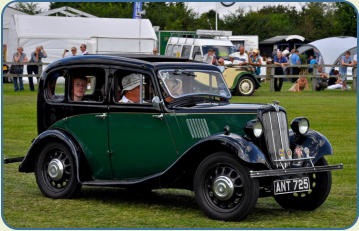
The Series E announced in October 1938[8] brought a major restyle with a "waterfall" dummy grille, headlights in the wings and the running boards had gone. The car was longer, wider and
grille, headlights in the wings and the running boards had gone. The car was longer, wider and heavier but the wheelbase was actually 1-inch (25 mm) shorter at 7 feet 5 inches (2.26 m).
heavier but the wheelbase was actually 1-inch (25 mm) shorter at 7 feet 5 inches (2.26 m). There was now an "inbuilt luggage compartment with external access" with a space available of
There was now an "inbuilt luggage compartment with external access" with a space available of 'close on 5¼ cubic feet with the door closed'. There was also a parcels tray the full width of the
'close on 5¼ cubic feet with the door closed'. There was also a parcels tray the full width of the dashboard. The "alligator" bonnet was now rear hinged making engine access poor. The engine
was upgraded to the Morris USHM series, getting a new cylinder head, still side-valve however,
dashboard. The "alligator" bonnet was now rear hinged making engine access poor. The engine
was upgraded to the Morris USHM series, getting a new cylinder head, still side-valve however, the unit being very similar to those used in series 1 and 2 cars. Increased power to 29 bhp (22
the unit being very similar to those used in series 1 and 2 cars. Increased power to 29 bhp (22 kW) was now available and the crankshaft was counterbalanced and fitted with shell-type
kW) was now available and the crankshaft was counterbalanced and fitted with shell-type bearings. The gearbox was now four-speed with syncromesh on second, third and top. The
bearings. The gearbox was now four-speed with syncromesh on second, third and top. The Lucas electrics remained at 6 volts, but now with automatic regulation of the dynamo in a two-
Lucas electrics remained at 6 volts, but now with automatic regulation of the dynamo in a two- brush system. Top speed was around 58 mph (93 km/h).
Production continued through the war for the military, essential civilian use and some export.
brush system. Top speed was around 58 mph (93 km/h).
Production continued through the war for the military, essential civilian use and some export. Post-war general production restarted in 1945 but there were no more tourers made in the UK.
Post-war general production restarted in 1945 but there were no more tourers made in the UK. In Australia, however, a flourishing body-building industry continued to provide tourer versions
In Australia, however, a flourishing body-building industry continued to provide tourer versions on imported chassis/mechanicals.
on imported chassis/mechanicals. The engine went on to be used, with very minor changes, in the series MM from 1948 till 1953
The engine went on to be used, with very minor changes, in the series MM from 1948 till 1953 Morris Minor and was also adapted as an auxiliary power unit in Centurion, Conqueror and
Morris Minor and was also adapted as an auxiliary power unit in Centurion, Conqueror and Chieftain tanks. Morris also used this engine as the basis of special Marine and Stationary
Chieftain tanks. Morris also used this engine as the basis of special Marine and Stationary power plants.
A very similarly styled Wolseley Eight was also prepared in the 1930s and offered after 1945.
power plants.
A very similarly styled Wolseley Eight was also prepared in the 1930s and offered after 1945. An original 1939 prototype survives, having for many years been owned by Lord Nuffield.
An original 1939 prototype survives, having for many years been owned by Lord Nuffield.
 grille, headlights in the wings and the running boards had gone. The car was longer, wider and
grille, headlights in the wings and the running boards had gone. The car was longer, wider and heavier but the wheelbase was actually 1-inch (25 mm) shorter at 7 feet 5 inches (2.26 m).
heavier but the wheelbase was actually 1-inch (25 mm) shorter at 7 feet 5 inches (2.26 m). There was now an "inbuilt luggage compartment with external access" with a space available of
There was now an "inbuilt luggage compartment with external access" with a space available of 'close on 5¼ cubic feet with the door closed'. There was also a parcels tray the full width of the
'close on 5¼ cubic feet with the door closed'. There was also a parcels tray the full width of the dashboard. The "alligator" bonnet was now rear hinged making engine access poor. The engine
was upgraded to the Morris USHM series, getting a new cylinder head, still side-valve however,
dashboard. The "alligator" bonnet was now rear hinged making engine access poor. The engine
was upgraded to the Morris USHM series, getting a new cylinder head, still side-valve however, the unit being very similar to those used in series 1 and 2 cars. Increased power to 29 bhp (22
the unit being very similar to those used in series 1 and 2 cars. Increased power to 29 bhp (22 kW) was now available and the crankshaft was counterbalanced and fitted with shell-type
kW) was now available and the crankshaft was counterbalanced and fitted with shell-type bearings. The gearbox was now four-speed with syncromesh on second, third and top. The
bearings. The gearbox was now four-speed with syncromesh on second, third and top. The Lucas electrics remained at 6 volts, but now with automatic regulation of the dynamo in a two-
Lucas electrics remained at 6 volts, but now with automatic regulation of the dynamo in a two- brush system. Top speed was around 58 mph (93 km/h).
Production continued through the war for the military, essential civilian use and some export.
brush system. Top speed was around 58 mph (93 km/h).
Production continued through the war for the military, essential civilian use and some export. Post-war general production restarted in 1945 but there were no more tourers made in the UK.
Post-war general production restarted in 1945 but there were no more tourers made in the UK. In Australia, however, a flourishing body-building industry continued to provide tourer versions
In Australia, however, a flourishing body-building industry continued to provide tourer versions on imported chassis/mechanicals.
on imported chassis/mechanicals. The engine went on to be used, with very minor changes, in the series MM from 1948 till 1953
The engine went on to be used, with very minor changes, in the series MM from 1948 till 1953 Morris Minor and was also adapted as an auxiliary power unit in Centurion, Conqueror and
Morris Minor and was also adapted as an auxiliary power unit in Centurion, Conqueror and Chieftain tanks. Morris also used this engine as the basis of special Marine and Stationary
Chieftain tanks. Morris also used this engine as the basis of special Marine and Stationary power plants.
A very similarly styled Wolseley Eight was also prepared in the 1930s and offered after 1945.
power plants.
A very similarly styled Wolseley Eight was also prepared in the 1930s and offered after 1945. An original 1939 prototype survives, having for many years been owned by Lord Nuffield.
An original 1939 prototype survives, having for many years been owned by Lord Nuffield.
Series E
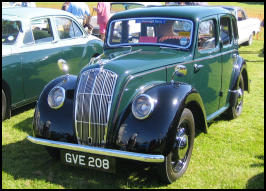
Morris Eight Series E
Series E 4 Door Saloon
Overview
Also called
Morris 8/40 (Australia)
Production
1938–48 120,434 Produced
Assembly
United Kingdom & Australia
Body and chassis
Body style
•
2-door saloon, fixed or sliding head
•
4-door saloon, fixed or sliding head
•
2-door cabriolet
•
2-door tourer
•
2-door roadster utility
•
2-door coupe utility
•
2-door panel van
Powertrain
Engine
918 cc Morris Type USHM Sidevalve
engine Straight-4
Dimensions
Wheelbase
89 in (2261 mm)
Length
144 in (3658 mm)
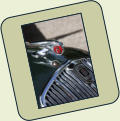
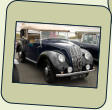
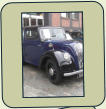
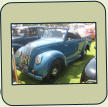
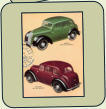
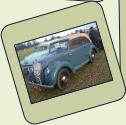
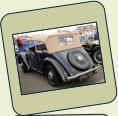
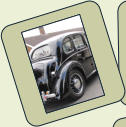
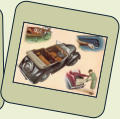
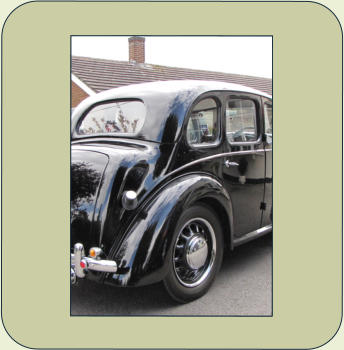
Morris Series Z
A van version of the Series E, rated at 5 cwt capacity and designated as the Series Z, was
produced from 1940 to 1953.While having the external appearance similar to the Series E,
mechanically the vans were more akin to the Series II, still having a three-speed gearbox.
More than 51,000 examples were built.
A coupé utility variant of the Series Z was produced in Australia, utilising imported chassis and
engines with locally built bodies.
Morris Series Z Van
Overview
Production
1940–54 Over 51,000 produced
Assembly
United Kingdom, Australia
Body and chassis
Body style
•
2-door van
•
2-door coupé utility (Australia)
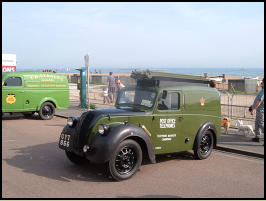
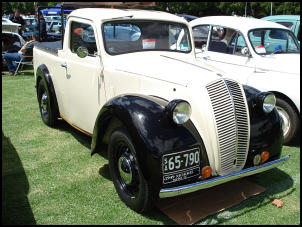
1949 Morris Series Z 5 cwt coupé utility

The Morris Eight

